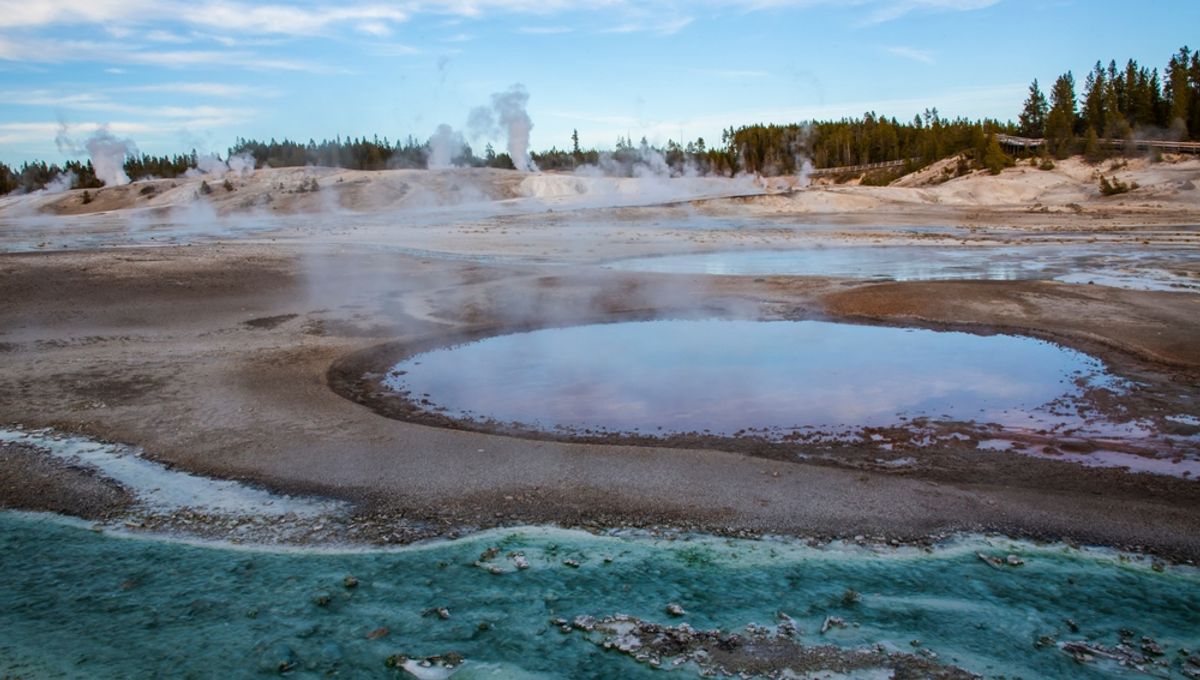
There’s a massive lump of liquidized, carbon-rich material hiding hundreds of kilometers beneath Yellowstone’s supervolcano and the greater Western United States area. It’s truly massive – 1.8 million square kilometers (about 700,000 square miles) in size – and it’s bubbling inside the upper region of the mantle, the region of the planet that’s a partly-molten churning mass of fiery doom.
It’s essentially molten carbonates, a type of rock that has a lot of carbon contained within it. In fact, this reservoir of carbon is so huge that it’s completely changed the way scientists understand the carbon cycle.
To put it in comparable terms, back in 2011, the amount of carbon released into the atmosphere – mainly through human activity – was about 10 billion tonnes (about 11 billion tons). This newly found reservoir implies that the upper mantle contains 10,000 times more carbon than this, primarily as trapped carbon dioxide gas.
“Releasing only 1% of this CO2 into the atmosphere will be the equivalent of burning 2.3 trillion barrels of oil,” lead co-author Sash Hier-Majumder, a senior lecturer in geophysics at Royal Holloway, said in a statement.
That’s roughly 325 times greater than the United States’ annual oil consumption.
Although this carbon will slowly make its way to the surface via volcanic eruptions, there’s absolutely no need to fret. It will have an incredibly small effect on the rate of climate change we are now experiencing, which a recent study clocked as being 170 times faster than what would be expected if humanity was taken out of the equation.
Writing in the journal Earth and Planetary Science Letters, a team from London’s Royal Holloway explain how they used an enormous network of seismic sensors to pick up on the carbonate monster beneath our feet.
Seismic waves travel at different speeds and at different angles through a variety of materials. This means that researchers can use such waves to determine what the innards of the planet are made of, and this newly emplaced, extensive sensor network was used to make this astonishing discovery.
“Under the western US is a huge underground partially-molten reservoir of liquid carbonate,” Hier-Majumder added. “It is a result of one of the tectonic plates of the Pacific Ocean forced underneath the western USA, undergoing partial melting thanks to gasses like CO2 and H2O contained in the minerals dissolved in it.”
Normally, when one tectonic plate gets forced under another in a process known as subduction, you get a very complex, layered style of melting within the space above the descending plate as it dehydrates. This ultimately produces large volumes of thick, gassy magma that produces some of the most explosive volcanoes.
Mount St. Helens – and the entire Cascade Arc it belongs to – are prime examples of this type of subduction-zone volcanism. However, every now and then, you get a very weird form of melt appearing in the mix – in this case, plenty of carbon-rich rocks were added to the upper mantle.
When carbon-rich magma makes it to the eruption phase, it tends to produce incredibly fluid, very “cold,” black-and-white carbonatite lava. Several volcanoes in the East African Rift exhibit this type of eruptive activity, which creates some truly alien-looking landscapes.
There isn’t any evidence at the surface yet that carbonatite volcanoes will spring up across the Western US anytime soon, and it’s more likely that you’ll just get very gassy, “conventional” explosive eruptions instead.
Still, give it a few tens of millennia, and hey, you never know, the planet may surprise you – or your descendants, anyway – with its strange volcanic ways.
Source Link: Scientists Have Found Something Weird Beneath Yellowstone